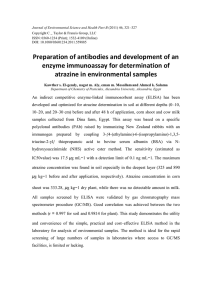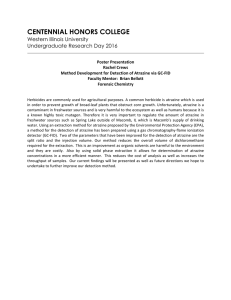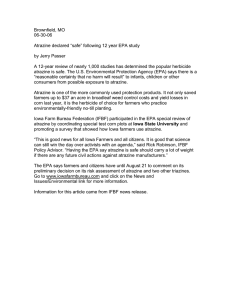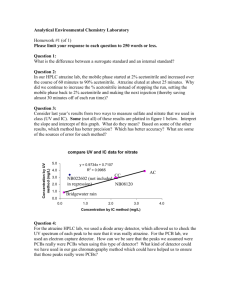Evaluation of Atrazine Binding to Surface Soils
advertisement
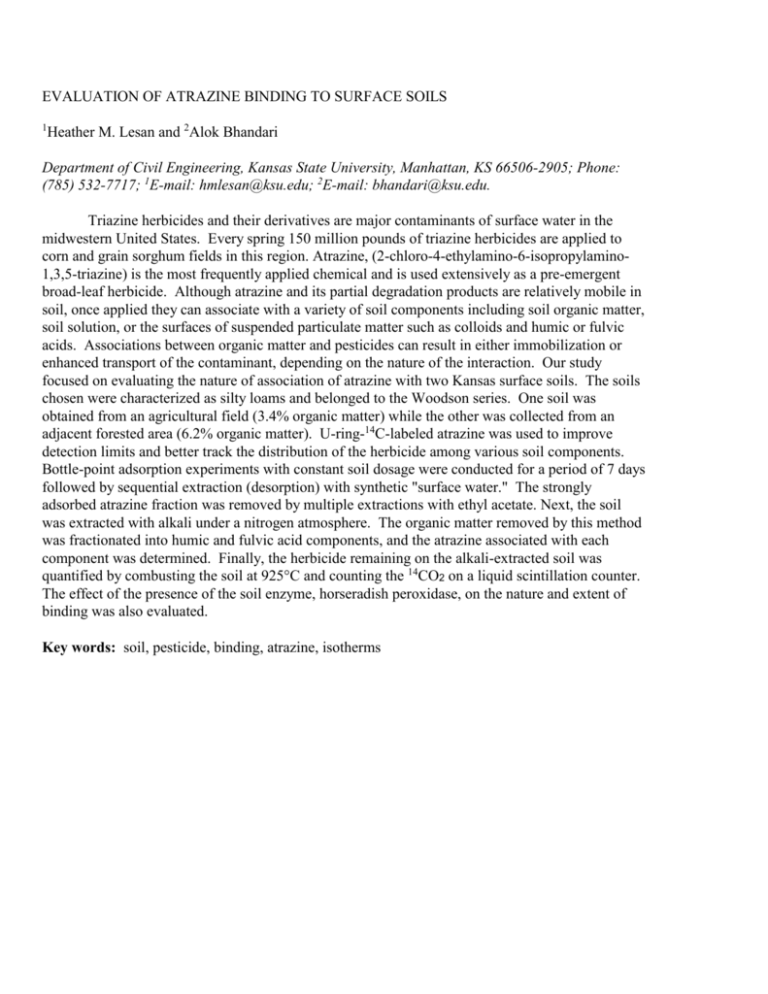
EVALUATION OF ATRAZINE BINDING TO SURFACE SOILS 1 Heather M. Lesan and 2Alok Bhandari Department of Civil Engineering, Kansas State University, Manhattan, KS 66506-2905; Phone: (785) 532-7717; 1E-mail: hmlesan@ksu.edu; 2E-mail: bhandari@ksu.edu. Triazine herbicides and their derivatives are major contaminants of surface water in the midwestern United States. Every spring 150 million pounds of triazine herbicides are applied to corn and grain sorghum fields in this region. Atrazine, (2-chloro-4-ethylamino-6-isopropylamino1,3,5-triazine) is the most frequently applied chemical and is used extensively as a pre-emergent broad-leaf herbicide. Although atrazine and its partial degradation products are relatively mobile in soil, once applied they can associate with a variety of soil components including soil organic matter, soil solution, or the surfaces of suspended particulate matter such as colloids and humic or fulvic acids. Associations between organic matter and pesticides can result in either immobilization or enhanced transport of the contaminant, depending on the nature of the interaction. Our study focused on evaluating the nature of association of atrazine with two Kansas surface soils. The soils chosen were characterized as silty loams and belonged to the Woodson series. One soil was obtained from an agricultural field (3.4% organic matter) while the other was collected from an adjacent forested area (6.2% organic matter). U-ring-14C-labeled atrazine was used to improve detection limits and better track the distribution of the herbicide among various soil components. Bottle-point adsorption experiments with constant soil dosage were conducted for a period of 7 days followed by sequential extraction (desorption) with synthetic "surface water." The strongly adsorbed atrazine fraction was removed by multiple extractions with ethyl acetate. Next, the soil was extracted with alkali under a nitrogen atmosphere. The organic matter removed by this method was fractionated into humic and fulvic acid components, and the atrazine associated with each component was determined. Finally, the herbicide remaining on the alkali-extracted soil was quantified by combusting the soil at 925°C and counting the 14CO2 on a liquid scintillation counter. The effect of the presence of the soil enzyme, horseradish peroxidase, on the nature and extent of binding was also evaluated. Key words: soil, pesticide, binding, atrazine, isotherms
